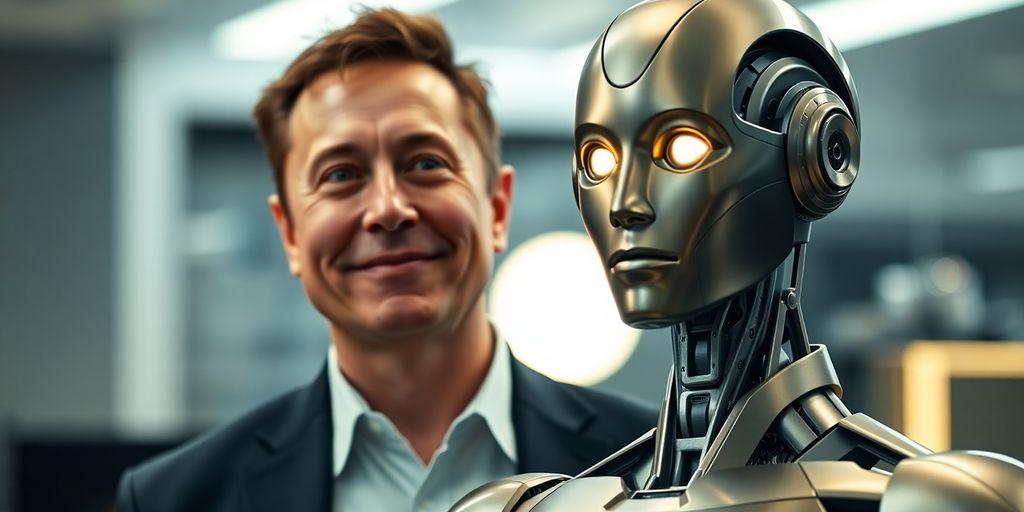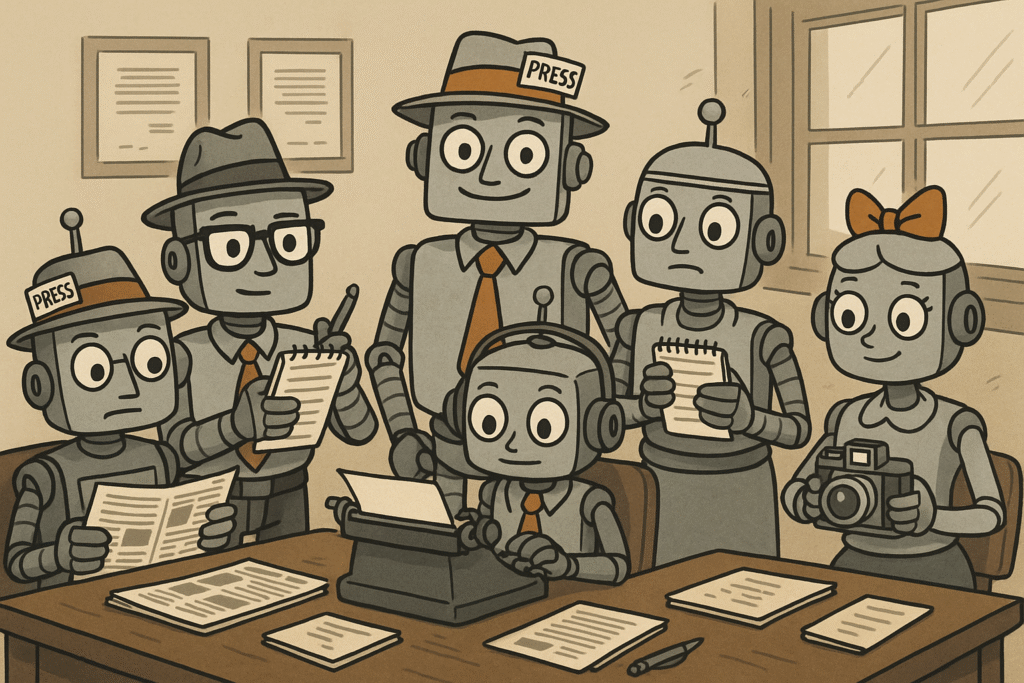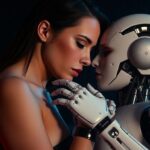So, you’ve probably seen those pictures floating around the internet: Elon Musk cozying up to some super realistic robot women. They’ve gone viral, sparking all sorts of chatter about Tesla’s secret projects and whether Musk is actually building himself a “robot wife.” It’s a wild story, right? But before you start picturing a future where everyone has a humanoid companion, let’s pump the brakes a bit. We’re here to fact-check these images and figure out what’s really going on with the whole elon musk robot girlfriend buzz.
Key Takeaways
- The viral images of Elon Musk with a “robot girlfriend” are not real; they are AI-generated.
- A digital artist named Pablo Xavier created these images, using AI prompts.
- This same artist also made the famous AI image of the Pope in a puffer jacket.
- Tesla’s actual robot project is called Optimus, and it’s designed for work tasks, not as a companion.
- It’s important to be careful about what you see online, especially with how good AI images are getting.
Unmasking the Elon Musk Robot Girlfriend Images
The Viral Spread of AI-Generated Content
It’s wild how quickly things can spread online, right? One minute you’re scrolling through your feed, and the next, you’re seeing images of Elon Musk with what looks like a robot girlfriend. These images went viral fast. What’s even crazier is that they’re not real. They’re AI-generated, meaning a computer created them. It shows how easy it is for fake stuff to get shared and believed these days. It’s a good reminder to always question what you see online. The speed at which these images circulated highlights the power of social media algorithms and the need for increased media literacy.
Debunking the "Robot Wife" Claims
Okay, so about those claims that Elon Musk is building a "robot wife" – let’s set the record straight. There’s absolutely no evidence to support this. It all stems from these AI-generated images, and people just ran with it. It’s a classic case of misinformation. Tesla is working on robots, yes, like the Tesla Bot Update, but they’re designed for practical tasks, not companionship. Don’t believe everything you read, folks! Here’s a quick rundown:
- The images are fake.
- There’s no official announcement from Tesla.
- It’s just a rumor that spiraled out of control.
The Artist Behind the Elon Musk Robot Girlfriend Hoax
So, who made these images? Turns out, it’s a digital creator who goes by Pablo Xavier. He owns the Instagram account @art_is_2_inspire. He’s the same guy who created the viral image of Pope Francis wearing a Balenciaga coat. He uses AI to create these images, and they’re often pretty convincing. It’s a reminder that AI image generation is getting really advanced, and it can be hard to tell what’s real and what’s not. It also raises questions about the ethics of creating and sharing these kinds of images. It’s important to note that while the images are fake, the impact they have on public perception is very real.
The True Origin of the Elon Musk Robot Girlfriend Photos
Pablo Xavier: The Digital Creator
So, where did these images actually come from? It turns out they weren’t leaked from Tesla’s secret labs or anything like that. The images were created by a digital artist named Pablo Xavier. He’s the guy behind the Instagram account @art_is_2_inspire. You might recognize his work, even if you don’t know his name.
AI Prompts and Image Generation
Okay, so Pablo Xavier made them, but how? Well, he used AI image generators. He provided specific prompts to the AI, describing what he wanted to see. It’s kind of like giving instructions to a very talented, very literal artist. The AI then interprets those instructions and creates an image based on them. It’s important to remember that these images are entirely fabricated; they’re digital creations, not real photographs. The AI-generated images are not real.
Connection to the "Balenciaga Pope" Image
Here’s a fun fact: Pablo Xavier is also the artist who created the viral image of Pope Francis wearing a Balenciaga puffer jacket. Remember that one? It fooled a lot of people too! It just goes to show how convincing AI-generated images can be, and how easily they can spread online. It’s a good reminder to always be skeptical of what you see on the internet.
It’s pretty wild to think that the same person is behind both the Elon Musk robot girlfriend images and the Pope in a puffer jacket. It really highlights the power of AI image generation and the potential for misinformation.
Understanding Tesla’s Real Robot Endeavors

Introducing Tesla Bot Optimus
Tesla isn’t actually making "robot wives," despite what those AI-generated images might suggest. What they are doing is working on a humanoid robot called Optimus, or Tesla Bot. This project aims to create a general-purpose robot capable of performing tasks that are unsafe, repetitive, or boring for humans. The idea is to eventually produce millions of these robots, potentially transforming the economy. Tesla Bot Update was presented at a shareholder meeting.
Optimus’s Actual Capabilities
So, what can Optimus actually do? Well, it’s still in development, but Tesla has shown prototypes performing basic tasks. These include:
- Walking autonomously
- Sorting objects
- Watering plants
- Basic manipulation of tools
It’s important to remember that Optimus is not designed for companionship or romantic relationships. It’s intended to be a useful tool, capable of assisting with various tasks in different environments, from factories to homes.
No Plans for a "Robot Wife"
Let’s be clear: Tesla has never announced any plans to create a "robot wife." The entire narrative stems from AI-generated images and online speculation. While Elon Musk has a history of making bold claims and pursuing ambitious projects, a romantic robot is not among them. The focus remains on developing a functional and practical humanoid robot for real-world applications.
Why the Elon Musk Robot Girlfriend Story Gained Traction
Social Media Misinformation Campaigns
Social media platforms can be fertile ground for misinformation. The speed at which content spreads, combined with algorithms that prioritize engagement, means that sensational stories, even false ones, can quickly go viral. In this case, the Elon Musk robot girlfriend narrative likely gained traction because it was visually striking and tapped into existing anxieties and fascinations about AI and relationships. The AI-generated images themselves were designed to be shareable, and the lack of verification on some platforms allowed the story to spread unchecked.
The Allure of Sensational Headlines
Let’s be honest, a headline about Elon Musk having a robot girlfriend is pretty attention-grabbing. Sensationalism sells, and news outlets (and social media accounts) often prioritize clicks and views over accuracy. The more outrageous a claim, the more likely people are to click on it, share it, and talk about it. This creates a feedback loop where the story’s virality reinforces its perceived importance, even if it’s completely fabricated.
Elon Musk’s Public Persona
Elon Musk is a figure who already attracts a lot of attention. He’s known for his ambitious technological projects, his sometimes controversial statements, and his active social media presence. This makes him a prime target for both genuine interest and misinformation campaigns. The robot girlfriend story plays into existing narratives about Musk’s futuristic vision and his perceived eccentricities, making it seem plausible to some people. It’s easier to believe something outlandish when it involves someone who is already seen as unconventional.
The combination of a recognizable public figure, visually compelling (though fake) images, and the inherent sensationalism of the story created a perfect storm for online virality. People are naturally curious, and the story provided a mix of intrigue, speculation, and even a bit of humor, which all contributed to its widespread dissemination.
Identifying AI-Generated Images Like the Elon Musk Robot Girlfriend
Telltale Signs of AI Manipulation
Spotting AI-generated images can be tricky, but there are clues. Look closely at details that are often overlooked. For example, check for inconsistencies in the background, weird lighting, or unnatural textures. AI often struggles with complex details like hands, teeth, and text, so those are good places to start. Also, be wary of images that seem too perfect; real photos often have imperfections.
Tools for Verifying Image Authenticity
Several tools can help you determine if an image is AI-generated. Reverse image search is a good first step – tools like Google Image Search or TinEye can show you where else the image has appeared online and if it’s been altered. There are also specialized AI detection tools that analyze images for telltale signs of AI manipulation. These tools aren’t perfect, but they can provide valuable insights.
Here’s a short list of things to check:
- Unusual lighting or shadows
- Asymmetrical faces or features
- Blurry or distorted backgrounds
- Repetitive patterns
The Importance of Critical Media Literacy
In today’s digital world, it’s more important than ever to be a critical consumer of media. Don’t just accept what you see at face value. Take the time to question the source, consider the context, and look for evidence to support the claims being made. Developing these skills will help you avoid falling for misinformation and make more informed decisions.
Ultimately, the best defense against AI-generated misinformation is a healthy dose of skepticism. Before sharing an image, ask yourself: Does this seem plausible? Where did it come from? What’s the motivation behind sharing it? By asking these questions, you can help stop the spread of false information.
The Impact of False Elon Musk Robot Girlfriend Narratives

Erosion of Public Trust
AI-generated hoaxes, like the Elon Musk robot girlfriend story, chip away at something important: public trust. When people can’t easily tell what’s real and what’s fake, they start to doubt everything they see online. This makes it harder to have informed discussions or agree on basic facts. The constant barrage of misinformation can lead to cynicism and disengagement from important issues.
Distraction from Real Technological Advancements
All the buzz around fake robot girlfriends takes attention away from actual progress in robotics and AI. Tesla’s Optimus robot, for example, is doing some pretty cool stuff, but that gets overshadowed by silly stories. It’s like focusing on a magic trick instead of the real science behind it. We miss out on understanding the true potential and challenges of these technologies when we’re busy chasing after fabricated narratives.
Consequences for Online Discourse
Misinformation spreads like wildfire online, and the Elon Musk robot girlfriend story is a prime example. These false narratives can have real consequences for online discourse. They can:
- Polarize opinions.
- Fuel online harassment.
- Make it harder to have constructive conversations.
It’s important to remember that what we share online has an impact. Spreading false information, even if it seems harmless, can contribute to a more toxic and distrustful online environment.
Fact-Checking the Elon Musk Robot Girlfriend Claim
Official Statements and Reports
When a story like the Elon Musk robot girlfriend claim goes viral, the first thing to look for is official confirmation or denial. Has Tesla released any statement about this? Are there any reports from reputable news outlets confirming this? Usually, official channels remain silent on such matters, which is a red flag. It’s important to check Tesla’s official website and Elon Musk’s social media for any mention of the robot wife project. No such announcements exist, which immediately casts doubt on the claim.
Cross-Referencing Multiple Sources
Don’t just rely on one source. If the story were true, multiple reliable news outlets would be reporting on it. A key step in fact-checking is to see if other sources corroborate the information. If it’s only circulating on social media or less credible websites, it’s likely false. Look for consistent details across different reports. If the details are vague or contradictory, that’s another sign that the story is not accurate. For example, Tesla’s Optimus robot is a real project, but it’s not intended to be a "robot wife."
The Role of Independent Fact-Checkers
Independent fact-checkers play a vital role in debunking misinformation. Websites like Snopes, PolitiFact, and others dedicate themselves to verifying claims and providing evidence-based assessments. These organizations often investigate viral stories and provide detailed explanations of why they are false. They often trace the origin of the claim and analyze the evidence presented. Consulting these fact-checking websites can quickly reveal whether a claim has already been debunked. They often provide a rating (e.g., "False," "Mostly False") to indicate the accuracy of the claim.
It’s easy to get caught up in sensational stories, especially those involving well-known figures like Elon Musk. However, taking a few minutes to verify the information can prevent the spread of misinformation and help maintain a more informed online environment.
Here are some steps to take:
- Check official sources.
- Look for multiple reliable reports.
- Consult independent fact-checkers.
Wrapping It Up: The Truth About Those Robot Girlfriend Pictures
So, what’s the real deal with those pictures of Elon Musk and a robot girlfriend? Well, it turns out they’re not real. Not even a little bit. These images are made with AI, which is pretty cool but also means they can trick people. Remember the Pope in a big puffer jacket? Same artist, same kind of fake. While Tesla is working on robots, they’re more about helping out with tasks, not, you know, being someone’s partner. So, next time you see something wild online, take a second to think if it’s actually true. It’s easy to get fooled these days.
Frequently Asked Questions
Are the pictures of Elon Musk with robot girlfriends real?
The images showing Elon Musk with robot girlfriends are not real. They were made using special computer programs that create fake pictures, also known as AI-generated images.
Who made these fake robot girlfriend pictures?
A digital artist named Pablo Xavier made these images. He’s known for creating other viral AI pictures, like the one of the Pope in a fancy jacket.
Is Tesla really making “robot wives”?
No, Tesla is not making “robot wives.” Elon Musk’s company, Tesla, is working on real robots called Optimus. These robots are designed to do helpful tasks, not be companions or partners.
Why did these fake robot pictures become so popular?
These pictures went viral because they combine a famous person (Elon Musk) with something exciting and a bit strange (robot girlfriends). People are often curious about new technology and celebrity gossip, making these kinds of stories spread quickly online.
How can I tell if a picture is made by AI?
You can often tell if an image is fake by looking for weird details, like strange hands or blurry backgrounds. Also, check if the story comes from a reliable news source. If it seems too wild to be true, it probably is!
What’s the big deal if some robot pictures are fake?
When fake stories like this spread, it makes it harder for people to trust real news. It also makes us focus on made-up things instead of important discussions about how technology is actually changing our world.









Leave a Reply